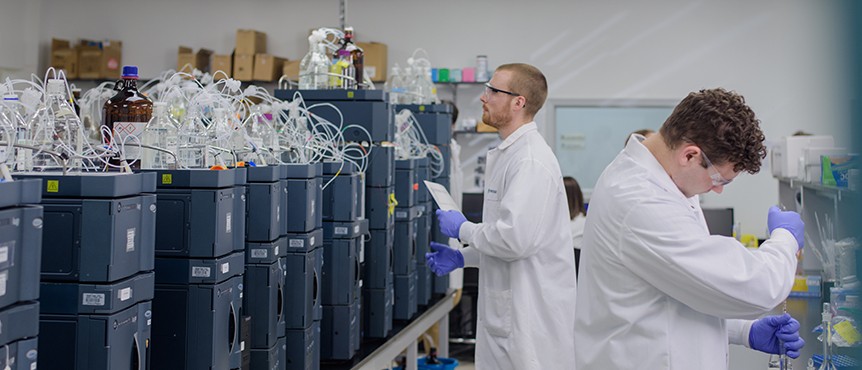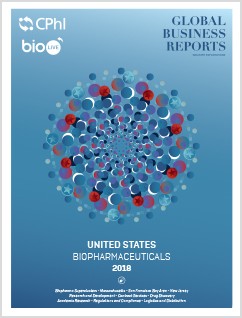Massachusetts offers perhaps the most attractive environment for biopharmaceutical research and development in the world, and is fast closing the gap with its rival supercluster in California.
RELATED PUBLICATION
ARTICLES FROM THIS PUBLICATION
The Winning Formula: Building the Number One Biopharmaceutical Supercluster
 PHOTO: Courtesy of Frontage
PHOTO: Courtesy of Frontage
Across the globe, governments seek to increase access to healthcare for their populations, which in many cases involves strategically fostering a competitive local industry. India’s focus on generics reflects a need for affordable, accessible medicine, whilst China’s growing biotech industry highlights a government focus on driving its technology sectors and meeting the needs of its growing population. The United States, however, continues to hold the torch when it comes to innovation, producing more than half of the world’s new molecules in the last decade. One of the most R&D-intensive industries in the United States, the pharmaceutical sector is accountable for a huge portion of global innovation and new medicine, investing over US$50 billion into R&D annually.
As innovation increasingly finds its roots in academic institutions and small biotech startups, the epicenter of medical progress has shifted away from regions with a historically strong presence of large pharma companies. The tables have in fact turned – it is now the big pharma companies that gravitate towards the fledgling innovative startups and academic institutions with spin-off potential. New Jersey, historically labelled the “Medicine Chest of the World”, might still be home to the headquarters of the likes of Johnson & Johnson and Merck, with 14 of the world’s 20 largest pharmaceutical, medical technology and diagnostics companies present in the state, but when it comes to drug discovery and R&D, these companies are increasingly focusing on world-renowned superclusters, such as the Boston/Cambridge area in Massachusetts and the San Francisco Bay Area in California.
However, the precise factors that have led to the rapid growth and snowballing attention on these two particular hubs is unclear. On paper, a state such as Seattle seems to hold the same ingredients as the leading hubs – strong academic institutions, the presence of prominent multinationals such as Bristol-Myers Squibb and Novo Nordisk, plus a supportive state government – and yet would not be considered as highly competitive for company relocation or investment.
The growth of the Boston/Cambridge life sciences industry has been pronounced in recent years, diminishing California’s lead as the number one biotech supercluster. The two are now arguably neck-and-neck in terms of attractiveness, with the Massachusetts area often cited as the most conducive to innovation due to its high concentration of companies and culture of collaboration. California still undoubtedly boasts the larger industry by numbers and investment – the California Life Sciences Association’s 2018 report indicates that there are currently 3,249 life sciences companies in the state, with US$6.7 Billion in venture capital attracted and US$3.8 billion in NIH grants in 2017. Meanwhile, Massachusetts received US$2.6 billion in NIH funding and US$2.9 billion in venture investment in 2016. However, in terms of drug discovery, Massachusetts-based companies have demonstrated remarkable efficiency with the funds received – whilst California companies currently have 1,274 new therapies in the pipeline, Massachusetts-headquartered companies boasted 1,896 drug candidates in 2017, accounting for 19% of the U.S. pipeline and 9% of the global pipeline.
Equally, whilst activity in the former state is spread expansively over 163,696 mi², activity in the latter is much more concentrated, covering only 10,565 mi², with a focus on the Boston/Cambridge area. “We are a very balanced ecosystem where we are not only a biopharma town but we are also a leading cluster in medical device, diagnostics, and digital health sectors,” commented Travis McCready, president and CEO at the Massachusetts Life Sciences Center. “No other region has strength in all these areas. In the same 10 to 15 square miles, 16 of the top 20 leading biopharma companies, the top 10 leading medical device manufacturers, and the top diagnostics manufacturers can all be found. This is truly quite rare. On top of this we now have all of these companies starting to work with each other which will be very important going forward.”
A great contributor to the rapid growth of Massachusetts’ life sciences sector over the last few years has been the support of the government, most clearly reflected in the allocation of a US$1 billion fund, distributed by the Massachusetts Life Sciences Center across three major capital categories as a catalyst for the industry’s growth. Half a billion dollars was allocated to capital infrastructure, spanning aspects from research facilities to high-end equipment. Within this category, arguably the most widely acknowledged success has been the LabCentral facility in Cambridge, into which US$10 million was invested. This facility, which provides lab space and resources to its resident companies, contributed to the creation of 402 new jobs and over US$300 million raised in additional financing in 2016 alone, plus the filing of 113 new patents and 27 new licensing agreements.
Of the remaining US$1 billion investment, US$250 million was made available for tax incentives, a huge support in the growth of small and mid-sized companies, and an attractive proposition for companies outside of Massachusetts open to relocating. The final US$250 million was allocated towards an investment fund for pre-seed and seed stage companies, also contributing to internship programs for approximately 500 to 525 high school and college students every year. The Massachusetts Life Sciences Center is now in the process of securing a further half-a-billion dollar investment to be allocated over the next five years.
As the financing climate shifts, Massachusetts will likely continue to close the gap on California’s financing lead as more funds are invested by large pharma companies, from which Massachusetts’ biotechs are seeing increasing support and collaboration opportunities. Highlighting the importance of the significant presence of 18 of the top 20 pharma companies within the state, McCready noted: “An interesting dynamic is taking place: on a per capita basis, we lead the United States in the amount of venture capital being invested into early stage companies… However, unlike in years past, those venture capital dollars are going in larger tranches to a smaller number of companies. The ecosystem has managed to maintain equilibrium because the large pharma and medical device companies have their own investment funds, which amounts to about a billion dollars going into early stage companies. This deployment of investment funds in young companies is not done in any other ecosystem.”
By fostering a supportive ecosystem in which start-ups are able to thrive, the potential for bringing novel drugs to market amplifies. Many of these small biotech companies are addressing novel targets across a variety of therapeutic areas; by softening the financial burden, they are better able to progress focused pipelines, bringing new treatments to market and addressing unmet needs more quickly and efficiently.
Across the valley of death: bringing academic research into the market
Cited by many as the primary contributing factor in the success of a technology- and research-driven industry, academic institutions cannot be overlooked as a vital driving force of the life sciences industry. The University of California, San Francisco, is California’s top recipient of NIH funding, followed by Stanford University, the University of California, San Diego followed by Los Angeles, the University of Southern California and the University of California, Davis, to name a few. In Massachusetts, universities such as Harvard, MIT, Boston University, Tufts and Northeastern University place a great emphasis on industry collaboration, and have been increasingly recognized by industry as an important and advantageous partner for innovative progress.
“Massachusetts did not become the top life sciences hub in the world by chance,” stated Robert K. Coughlin, president and CEO at the Massachusetts Biotechnology Council (MassBIO). “There would be no biotechnology or life sciences industry in Massachusetts were it not for the world-class academic institutions and academic medical centers. We have the best and brightest scientists in the world working to develop new, breakthrough cures and treatments. Together with a thriving life sciences industry, there is no unmet medical need known to humankind that somebody in this market is not trying to solve.”
The growing number of companies spun out of universities is testament to an increasing emphasis on cutting-edge research as the foundation of medical progress. Universities, too, are better positioned to actualize and commercialize research through collaboration, benefiting from industry support and additional funding opportunities. “Strategic industry partnerships are instrumental in realizing those goals to create positive real-world impact,” commented Krystyn Van Vliet, associate provost at MIT. “We will continue to forge partnerships from early-stage research to commercialization with companies located in Cambridge and those headquartered elsewhere. Spinning our work off into smaller companies can de-risk the technology, and we will remain committed to converting research into real-world applications and solutions.”
Academic institutions continue to form the backbone of a great deal of innovation in the life sciences industry. The presence of top universities presents an excellent opportunity for collaboration and, as such, will continue to be a key factor in attracting companies, as well as acting as an ever-growing source of new companies.
Forging the path to success
In an industry that holds the improvement of patient health and quality of life at its core, working together towards a common goal is a logical step in advancing treatment options and discovering cures. In line with the premise that “two heads are better than one”, and in conjunction with trends towards external innovation in the large pharma space, collaboration is becoming widely accepted as essential in achieving optimal results and accelerating timelines for getting new drugs to market. Whilst industry priorities may change over time, the broad acceptance of a collaborative approach as highly favorable in achieving end goals more efficiently has cast a spotlight on Massachusetts due to its high concentration of companies and academic institutions, alongside government support and favorable innovation framework.











